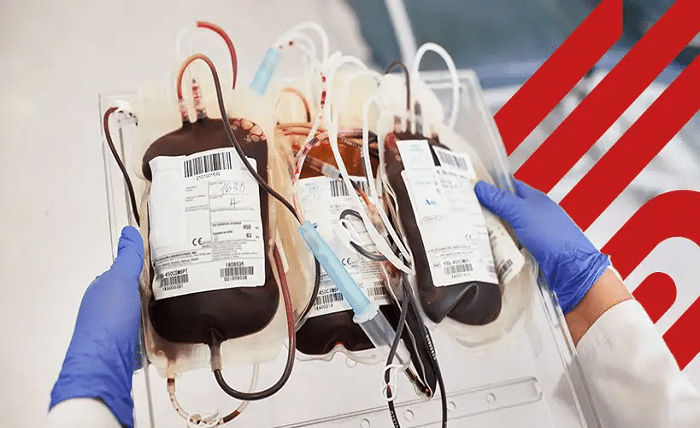Innovations in Blood Container Materials: Enhancing Blood Preservation

Blood preservation is a critical aspect of healthcare, ensuring that blood products maintain their integrity and efficacy from donation to transfusion. The materials used in blood containers used in blood bank play a vital role in this process, influencing factors such as oxygen permeability, flexibility, and biocompatibility. Innovations in blood container materials have led to significant advancements in blood preservation, extending storage times, improving safety, and enhancing the overall quality of stored blood products. In this article, we explore the latest innovations in blood container materials, their benefits, and their role in preserving blood, alongside the importance of lab freezers in maintaining these advancements.
The Evolution of Blood Container Materials
Over the years, blood containers have transitioned from glass bottles to plastic bags, offering greater flexibility, ease of use, and improved preservation. The choice of materials has a direct impact on the quality and longevity of stored blood products. Recent innovations in blood container materials have focused on addressing key challenges such as oxygenation, contamination, and storage stability.
Key Innovations in Blood Container Materials
- Plasticizers for Flexibility:
– Traditional PVC (polyvinyl chloride) blood bags were commonly used but raised concerns about plasticizer leaching.
– Innovations have led to the development of safer plasticizers, such as DEHP-free alternatives.
– These flexible materials reduce the risk of bag breakage and improve handling during storage and transport.
- Oxygen Permeable Materials:
– Oxygenation is crucial for maintaining the viability of red blood cells (RBCs) during storage.
– New materials with controlled oxygen permeability allow for optimal gas exchange while preventing oxidative damage.
– This innovation extends the shelf life of RBCs and improves transfusion outcomes.
- Biocompatible and Non-Toxic Polymers:
– Biocompatibility is essential to prevent adverse reactions when blood products come into contact with container materials.
– Advanced polymers, such as polyethylene and polypropylene, ensure non-toxic interactions with blood components.
– Reduces the risk of hemolysis and other complications during storage and transfusion.
- Anti-Contamination Coatings:
– Blood containers are vulnerable to bacterial contamination, especially during extended storage periods.
– Innovative coatings with antimicrobial properties prevent bacterial growth and biofilm formation.
– Enhances the safety and sterility of stored blood products, reducing the risk of transfusion-related infections.
- Enhanced Sealants and Closure Systems:
– Proper sealing of blood bags is crucial to prevent leaks and maintain a sterile environment.
– Improved sealants and closure systems ensure airtight seals, reducing the risk of sample loss or contamination.
– Enables safe and secure storage of blood products, even during long-term freezing in lab freezers.
- Transfusion-Compatible Materials:
– Compatibility with transfusion equipment, such as blood warmers and infusion pumps, is essential.
– New materials are designed to be compatible with various transfusion devices, ensuring smooth and efficient transfusions.
– Reduces the risk of material-related complications during the transfusion process.
- High-Density Polyethylene (HDPE) Containers:
– HDPE offers superior strength and durability compared to traditional materials.
– Used in the development of blood containers for platelets and other fragile blood components.
– Provides a safe and reliable option for long-term storage, especially in lab freezers with ultra-low temperatures.
- Eco-Friendly and Recyclable Materials:
– Increasing focus on sustainability has led to the development of eco-friendly blood container materials.
– Biodegradable plastics and recyclable polymers reduce the environmental impact of blood storage.
– Promotes green practices in healthcare facilities, aligning with sustainability goals.
Benefits of Innovative Blood Container Materials
- Extended Shelf Life:
– Improved oxygen permeability and reduced oxidative stress lead to longer storage times for blood products.
– Enables blood banks to maintain larger inventories and meet fluctuating demand without compromising product quality.
- Enhanced Safety and Sterility:
– Anti-contamination coatings and biocompatible materials minimize the risk of bacterial growth and contamination.
– Ensures the safety of blood products for transfusion, reducing the likelihood of transfusion-related infections.
- Improved Transfusion Outcomes:
– Compatibility with transfusion equipment and optimal oxygenation enhance the quality of transfused blood.
– Reduces the risk of adverse reactions and improves patient outcomes during transfusions.
- Flexibility and Ease of Use:
– Flexible and durable materials make blood bags easier to handle and transport.
– Simplifies the process of blood collection, storage, and distribution in healthcare settings.
- Cost-Efficiency and Sustainability:
– Eco-friendly materials and recyclable polymers contribute to cost savings and environmental conservation.
– Reduces the need for frequent replacements and promotes responsible resource management.
The Role of Lab Freezers in Preserving Innovative Blood Containers
Innovative blood container materials require proper storage conditions to maintain their integrity and effectiveness. Lab freezers, especially ultra-low temperature (ULT) freezers, play a crucial role in preserving blood bags and ensuring their long-term stability. Here’s how lab freezers contribute to the preservation of innovative blood container materials:
- Ultra-Low Temperature Storage:
– Blood containers with advanced materials, such as HDPE or oxygen-permeable polymers, benefit from ultra-low temperature storage.
– ULT freezers maintain temperatures as low as -80°C or -86°C, ideal for preserving blood bags without compromising their properties.
- Temperature Stability:
– Consistent and uniform temperature distribution throughout the freezer cabinet ensures the integrity of blood bags.
– Prevents temperature fluctuations that could affect the quality of stored blood products.
- Optimal Oxygenation:
– Oxygen-permeable materials in blood bags require controlled oxygen levels for optimal preservation.
– ULT freezers provide the necessary conditions for maintaining oxygenation levels, enhancing the shelf life of blood products.
- Secure Storage Environment:
– Lab freezers offer a secure and controlled environment for storing blood bags, protecting them from external contaminants.
– Prevents exposure to light, moisture, and other factors that could compromise the integrity of blood products.
- Backup Systems for Redundancy:
– Some lab freezers are equipped with backup power systems or dual compressors for added redundancy.
– Ensures continuous operation and maintains stable storage conditions, even during power outages or equipment failures.
- Integration with Monitoring Systems:
– Lab freezers are often designed to integrate seamlessly with temperature monitoring and alarm systems.
– Allows for real-time monitoring of freezer conditions and immediate alerts for any deviations.
Conclusion
Innovations in blood container materials have revolutionized the field of blood preservation, offering extended shelf life, enhanced safety, and improved transfusion outcomes. From flexible PVC alternatives to oxygen-permeable polymers and anti-contamination coatings, these materials ensure the integrity and quality of stored blood products.
Lab freezers, particularly ultra-low temperature models, play a pivotal role in preserving these innovative blood containers. By providing optimal storage conditions, temperature stability, and secure environments, lab freezer contribute to the longevity and effectiveness of blood bags. The synergy between innovative materials and advanced freezer technology ensures that blood banks can meet the demands of transfusion medicine while prioritizing patient safety and product quality.





